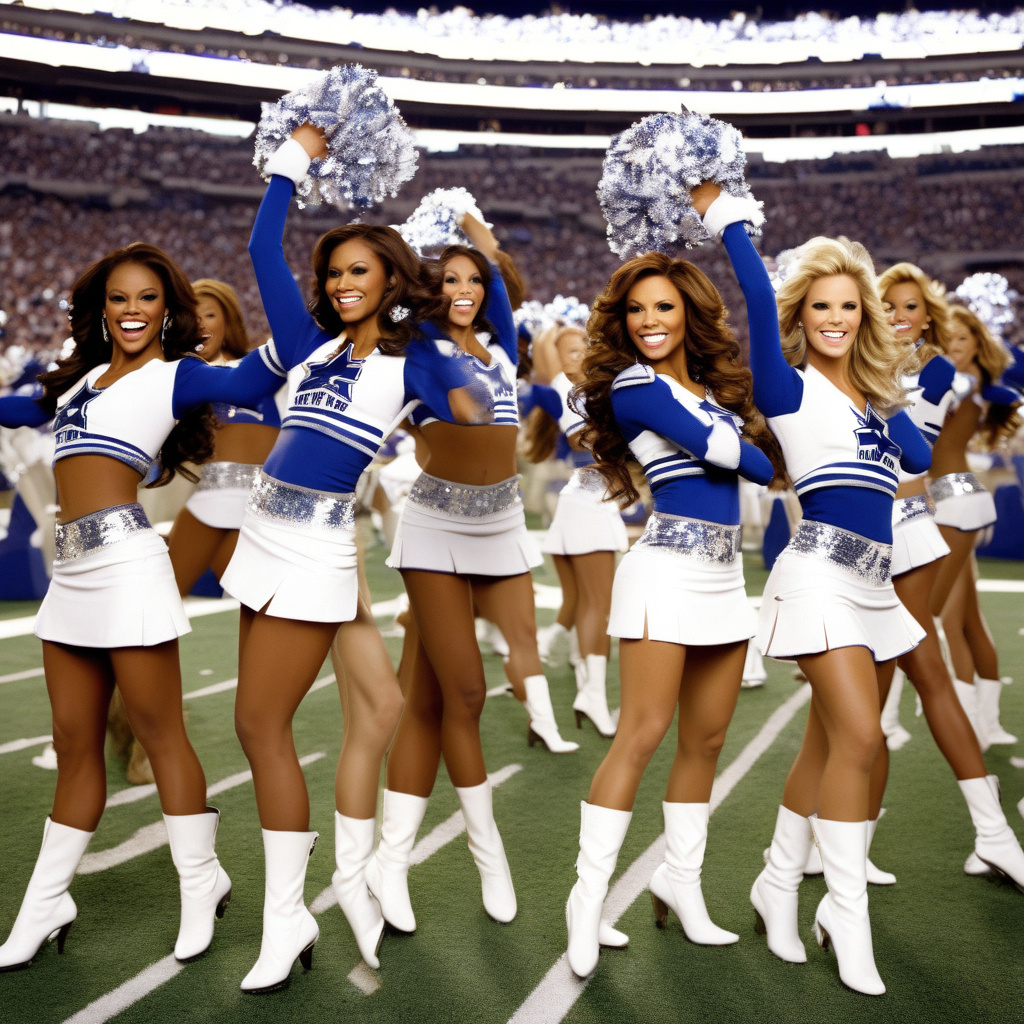The recent release of the second season of “America’s Sweethearts: Dallas Cowboy Cheerleaders” on Netflix has once again raised concerns about the toxic environment portrayed in the series. While showcasing the intense competition among veterans and rookies vying for a spot on the prestigious squad, the show also sheds light on outdated and harmful practices prevalent within the organization.
One of the most concerning aspects highlighted in the series is the emphasis on physical appearance, particularly during uniform fittings. The rigid standards set for the dancers, with no room for adjustments throughout the year, overlook factors like natural body fluctuations, muscle changes, and individual differences in body types. This unwavering focus on superficial attributes perpetuates unrealistic beauty standards and can have detrimental effects on the dancers’ self-esteem and well-being.
Despite claims of moving away from discussing body types by Director Kelli Finglass, instances in the second season suggest otherwise. Comments made about dancers’ physical attributes, such as “tiny shoulders and torsos always look good,” hint at a continued preoccupation with superficial features rather than valuing dancers for their talent and dedication.
Moreover, the series touches upon sensitive topics like body image issues and eating disorders among the cheerleaders. Stories shared by contestants about struggles with weight and unhealthy behaviors underscore the damaging impact of the relentless focus on appearance within the cheerleading squad. Such narratives not only reinforce harmful stereotypes but also contribute to a culture of body shaming and unrealistic expectations.
The inclusion of judges from unrelated backgrounds, like a country music singer and a broadcast meteorologist, in the audition process raises questions about the suitability of individuals assessing dancers based on their appearance. Critiques and comments made by these judges, often inappropriate and superficial, further highlight the problematic nature of the evaluation criteria used in the selection process.
While season 2 has been commended for the cheerleaders receiving a substantial pay raise, it took collective action from the team to achieve this milestone. The struggle for fair compensation underscores the broader issues of exploitation and disregard for the well-being of the performers within the organization. Despite some positive developments, the underlying culture of appearance-focused scrutiny remains largely unchanged.
In a society where idealized standards of beauty are increasingly pervasive, media representations like “America’s Sweethearts: Dallas Cowboys Cheerleaders” play a significant role in shaping perceptions and influencing attitudes towards body image. The normalization of unrealistic expectations and the perpetuation of harmful practices depicted in the series contribute to a toxic narrative that can have far-reaching consequences.
As viewers engage with the series, it is essential to critically analyze the messages being portrayed and consider the impact of such content on individuals, especially those directly involved in the competitive world of cheerleading. By raising awareness and advocating for more inclusive and supportive environments, we can work towards challenging harmful beauty norms and fostering a culture of acceptance and respect for all individuals.
While the choice to watch season 2 ultimately lies with individual discretion, it is crucial to approach such content with a discerning eye and a critical perspective. Acknowledging the underlying issues highlighted in the series can serve as a starting point for meaningful conversations about body image, representation, and the importance of promoting positive and empowering narratives in media portrayals.
“America’s Sweethearts: Dallas Cowboys Cheerleaders” is now available for streaming on Netflix, inviting viewers to engage with its compelling yet contentious portrayal of the competitive world of professional cheerleading.

